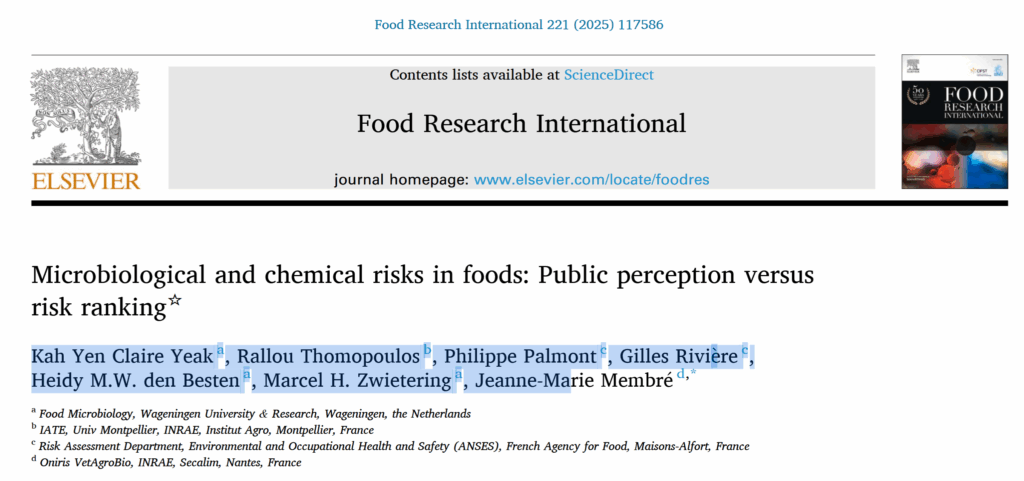Microbiological and chemical risks in foods: Public perception versus risk ranking

New Study on Public Perception of Risks in Infant Foods
Abtract:
Food safety is a critical public health concern, particularly regarding microbiological hazards (MHs) and chemical hazards (CHs) in infant foods.
This study examined the risk perceptions of MHs and CHs associated with fruit puree and infant formula within the general public (n = 3585) across the European Union with a focus on comparing general public views against outcomes of recently published risk ranking results based on scientific assessment.
In terms of public risk perception,
1) The general public perceived bacteria causing severe sickness (e.g., Listeria monocytogenes) or mild sickness (e.g., Bacillus cereus) as the highest concern and viruses or unknown hazards as the lowest;
2) The general public perceived the greatest and lowest concern for agricultural (e.g., pesticides) and fraudulent (e.g., melamine) contaminants, respectively;
3) The public exhibited a higher concern for CHs than MHs, likely due to a general distrust of chemicals in foods.
In terms of comparison between public perception and risk ranking, 1) public perception of hazard severity showed limited alignment with risk rankings (ρ = 0.67 for MHs and ρ = 0.15 for CHs); 2) in terms of risk, public perception aligned well with risk rankings for MH risks, with (ρ = 0.70 for infant formula and ρ = 0.97 for fruit puree). In contrast for CH risks, there was a strong misalignment between public perception and risk rankings showing correlation coefficients of ρ = 0.70 for infant formula and ρ = 0.20 for fruit puree.
The public tended to overestimate risks from agricultural and packaging-related chemicals while underestimating risks associated with environmental and natural contaminants.
These findings highlight the need for targeted communication strategies to bridge the gap between public perception and risk rankings based on scientific assessment, particularly for chemical risks.
Clear communication of scientific evidence, addressing misconceptions, and tailoring messages to audience needs could enhance public awareness and trigger appropriate actions.
https://doi.org/10.1016/j.foodres.2025.117586
Latest Reports, scientific publications
“Artificial intelligence for food safety – A literature synthesis, real-world applications and regulatory frameworks”
Food safety in the EU – Special EUROBAROMETER Report
Microbiological and chemical risks in foods: Public perception versus risk ranking
Food safety foresight: approaches to identify future food safety issues
Scientific cooperation among Europe’s One Health agencies
Rapid mycotoxin screening: An update on the evaluation of analytical performances and relevant criteria in relation to the method scope
